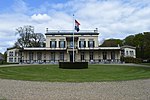Siege of IJsseloord

The siege of IJsseloord or the capture of Arnhem was a siege that took place between the 6 and 15 October 1585 at Arnhem (Gelderland in the Netherlands) during the Eighty Years' War and the Anglo-Spanish War (1585–1604). The Dutch and English were victorious when the sconce of IJsseloord after seven days capitulated and Arnhem fell into their hands. The English under Queen Elizabeth I had just signed the treaty of Nonsuch in August and as such the English contingent was enlarged and put under temporary command of John Norreys. After crossing the English channel they joined the States troops of Adolf van Nieuwenaar then headed towards Arnhem with 2,500 men where they intended to retake a sconce called IJsseloord. In the 16th century IJsseloord was a point that connected the Rhine and the IJssel and as such it was a strategic point running towards Zutphen and Deventer.
Excerpt from the Wikipedia article Siege of IJsseloord (License: CC BY-SA 3.0, Authors, Images).Siege of IJsseloord
Zevenaarseweg, Arnhem
Geographical coordinates (GPS) Address Nearby Places Show on map
Geographical coordinates (GPS)
| Latitude | Longitude |
|---|---|
| N 51.972219 ° | E 5.953522 ° |
Address
Zevenaarseweg
Zevenaarseweg
6826 TT Arnhem
Gelderland, Netherlands
Open on Google Maps








